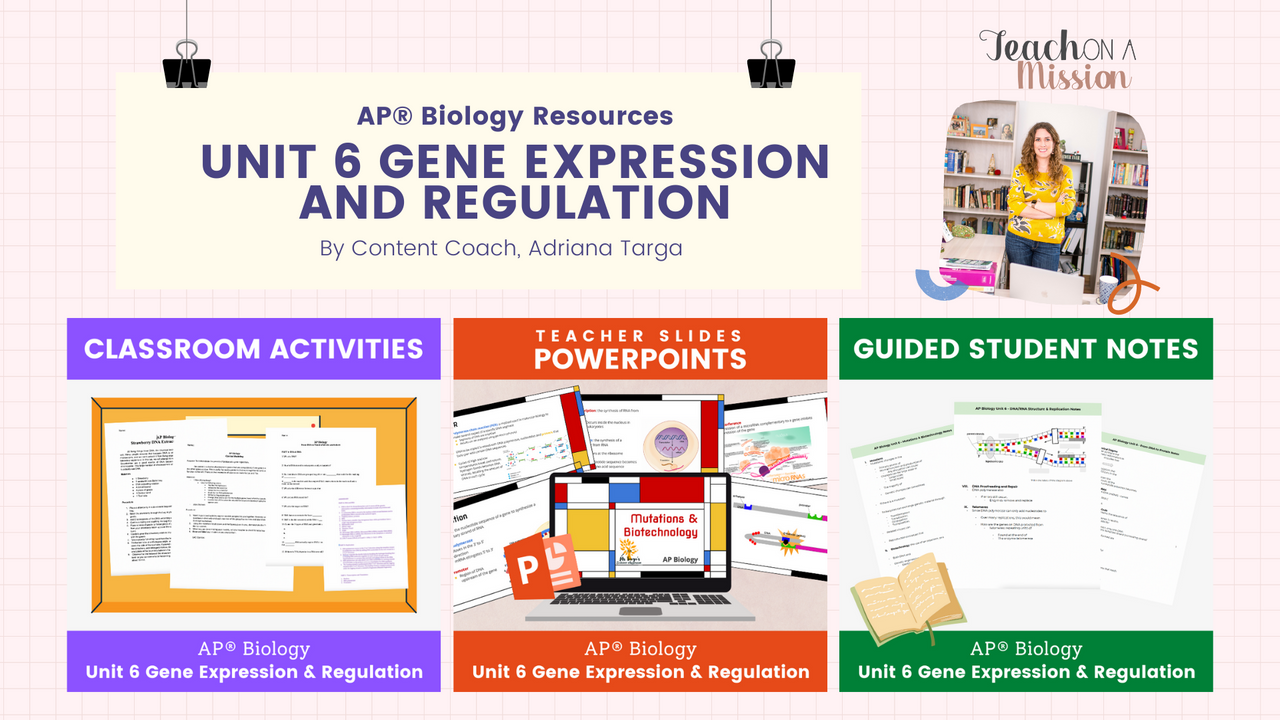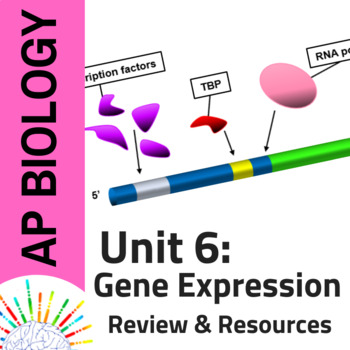Unit 6 Gene Expression And Regulation Ap Biology Exam Review
Unit 6 Gene Expression And Regulation AP Biology Exam Review
Welcome to our comprehensive exam review for Unit 6: Gene Expression and Regulation in AP Biology. In this review, we will explore the fundamental concepts, key topics, and important principles related to gene expression and regulation. So, let's dive in and enhance our understanding of this intriguing field of biology!
1. Introduction to Gene Expression and Regulation
Gene expression refers to the process by which information encoded in a gene is used to generate a functional gene product like a protein or RNA molecule. Regulation of gene expression is crucial for ensuring that genes are activated or repressed at the right time, in the right cell, and to the right extent. This section will provide a solid foundation regarding the significance, mechanisms, and factors influencing gene expression and regulation.

The image above showcases teacher slides designed specifically for AP Biology Unit 6. These slides serve as an excellent resource to enhance your understanding of gene expression and regulation topics covered in the curriculum.
2. Factors Influencing Gene Expression
Gene expression can be influenced by various factors, including genetic, epigenetic, and environmental factors. Understanding these factors is crucial as they play a significant role in shaping an organism's phenotype and overall development. In this section, we will explore the different factors that impact gene expression and their mechanisms in detail.

The image above provides a visual representation of Unit 6 of the AP Biology curriculum, which focuses on gene expression and regulation. This unit is a fundamental component of the AP Biology course and should be thoroughly understood for success in the exam.
3. Mechanisms of Gene Expression and Regulation
Gene expression and regulation involve complex molecular mechanisms that ensure precise control over gene activity. This section will delve into the various mechanisms, including transcription, translation, gene regulation networks, and post-translational modifications. A deep understanding of these mechanisms is essential to comprehend how genes are activated or repressed in different cellular contexts.
3.1 Transcription
Transcription is the process by which genetic information encoded in DNA is converted into RNA molecules. It plays a vital role in gene expression and regulation. We will explore the steps involved in transcription, the factors that regulate it, and its significance in various biological processes.
3.2 Translation
Translation is the process by which RNA molecules are used to synthesize proteins. It occurs in cellular structures called ribosomes and plays a crucial role in converting the genetic code into functional proteins. This subsection will provide insights into the intricacies of translation and its importance in gene expression.
3.3 Gene Regulation Networks
Gene regulation networks are complex systems of interactions that control the expression of genes. This subsection will explore the various components and regulatory mechanisms involved in gene regulation networks, such as transcription factors, enhancers, silencers, and feedback loops.
3.4 Post-Translational Modifications
Post-translational modifications refer to the covalent and enzymatic modifications that occur after protein synthesis. These modifications determine the protein's structure, stability, and function. This section will highlight the different types of post-translational modifications and their roles in gene expression and regulation.
FAQs
Q1: What is the significance of studying gene expression and regulation?
Understanding gene expression and regulation is crucial as it helps us comprehend how genetic information in DNA is converted into functional gene products and how their activities are precisely controlled. This knowledge is vital for various biological processes, including development, homeostasis, and response to environmental stimuli.
Q2: How can I prepare effectively for the AP Biology Unit 6 exam?
To prepare effectively for the AP Biology Unit 6 exam, it is recommended to thoroughly study the curriculum, review class materials, practice with past exam questions, and utilize additional resources such as textbooks, online tutorials, and educational platforms specifically designed for AP Biology exam preparations.
Q3: Can you provide some tips for understanding complex gene regulation networks?
Understanding complex gene regulation networks can be challenging. It is advisable to break down the networks into smaller components, study the interactions between different regulatory elements, and visualize the regulatory pathways using diagrams or concept maps. Additionally, seeking assistance from teachers, peers, or online forums can further enhance your understanding.
AP® Biology Unit 6 Gene Expression & Regulation Activities & Resources
 Image Source : www.teachonamission.com
Image Source : www.teachonamission.com Unit 6 Gene Expression And Regulation AP Biology Exam Review Flashcards
 Image Source : quizlet.com
Image Source : quizlet.com NEW AP Biology 2019 Review & Resources For Unit 6: Gene Expression
 Image Source : www.teacherspayteachers.com
Image Source : www.teacherspayteachers.com gene expression unit biology ap regulation resources review complete
Unit 6: Gene Expression And Regulation - AP Biology
 Image Source : slatonapbiology.weebly.com
Image Source : slatonapbiology.weebly.com AP® Biology Unit 6 Gene Expression & Regulation Teacher Slides Powerpoint
 Image Source : www.teacherspayteachers.com
Image Source : www.teacherspayteachers.com AP Biology Unit 6 Gene Expression & Regulation Content And Note Takers
 Image Source : www.teacherspayteachers.com
Image Source : www.teacherspayteachers.com AP Biology Unit 6 Test- Gene Expression And Regulation By Science Short
 Image Source : www.teacherspayteachers.com
Image Source : www.teacherspayteachers.com AP Bio Unit 6: Gene Expression And Regulation Cheat Sheet By
 Image Source : www.pinterest.com
Image Source : www.pinterest.com Ap biology unit 6 test- gene expression and regulation by science short. Ap bio unit 6: gene expression and regulation cheat sheet by. Unit 6 gene expression and regulation ap biology exam review flashcards. Gene expression unit biology ap regulation resources review complete. Ap® biology unit 6 gene expression & regulation activities & resources